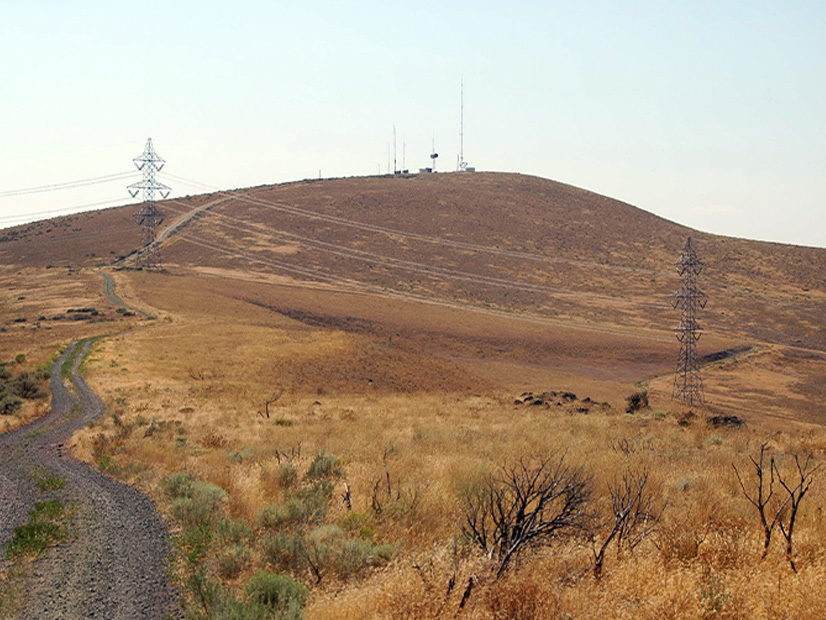
Gov. Jay Inslee has approved a revised plan for the largest wind turbine farm in Washington, stretching across 24 miles in the Horse Heaven Hills in the southeastern part of the state.
His approval leaves intact more than three-quarters of the originally requested number of turbines. The proposed turbine farm has drawn criticism for its possible impact on Native cultural sites and on wildlife in the area, as well as its visibility from the Tri-Cities of Richland, Kennewick and Pasco.
The project has provoked contentious disagreement among several environmental groups, with wind and solar proponents on one side and wildlife preservationists on the other, who raise concerns about the effects on ferruginous hawk nests.
The state’s Energy Facility Site Evaluation Council (EFSEC) approved the recommendation 4-3 in September. EFSEC posted on its website an Oct. 18 letter from Inslee (D) that said he considered “impacts on habitat, wildlife, tribal cultural resources, public safety and visual aesthetics. I believe this project is appropriately sited. … I also find that the council thoroughly and adequately responded to issues and concerns raised by tribal partners, the community and other stakeholders relating to this project.”
Opponents of the project have until Dec. 17 to appeal the decision to the state’s courts.
Inslee has pushed new wind turbine projects and solar panel farms as part of his campaign to trim the state’s carbon emissions. His Oct. 18 letter hinted at his impatience with the Horse Heaven Hills project taking most of 2024 to be approved.
“We will not meet our state’s urgent clean energy needs if the path to a final recommendation from the council spans multiple years and contains conditional micro-siting process requirements that further prolong final siting approval for a significant portion of the primary project components,” Inslee wrote. “Timely and efficient action by the council is essential to our mission to mitigate the impacts of climate change and provide adequate green energy alternatives. I strongly encourage the council to identify opportunities to increase its efficiency and provide for more timely decision-making. You can expect my office to engage with you on this critical issue before the end of my administration.”
Project developer Scout Clean Energy of Boulder, Colo., originally made plans for two scenarios, calling for a maximum of 147 of the 670-foot-tall wind turbines or 222 of the 500-foot turbines along a 24-mile east-west stretch along the hills. However, EFSEC decided in February to implement two-mile buffer zones around 60 to 70 ferruginous hawk nests in that area and remove turbines along the north slopes of the hills.
The company says those buffer zones cut Scout Clean Energy’s number of turbines by roughly half. At that time, the company said those changes would trim the projected 1,150 megawatts of wind power to 236 megawatts.
Inslee sent the February recommendations back to EFSEC, wanting to increase the number of turbines back to the original estimates. In recent months, EFSEC trimmed some ferruginous hawk buffer zones to 0.6 mile around the nests. In 2021, the Washington Fish & Wildlife Commission changed the status of ferruginous hawks from threatened to endangered.
The recommendations from September call for a 0.6-mile buffer around the nests, plus a 0.25-mile buffer around historic Native American fire sites, plus a one-mile buffer alongside Webber Canyon, another culturally sensitive spot for the Yakama Nation.
If the 500-foot turbines were installed, that would trim the number of turbines by approximately 50, from 222 to roughly 172. If the 670-foot turbines were installed, that would cut the number of turbines by approximately 34, from 147 to roughly 113. More precise figures will be calculated later.
Scout Clean Energy’s original proposal also included two 500-megawatt solar panel farms on the east and west sides of the 24-mile stretch. EFSEC ordered the eastern solar farm removed because of its proximity to sensitive Native cultural sites.

